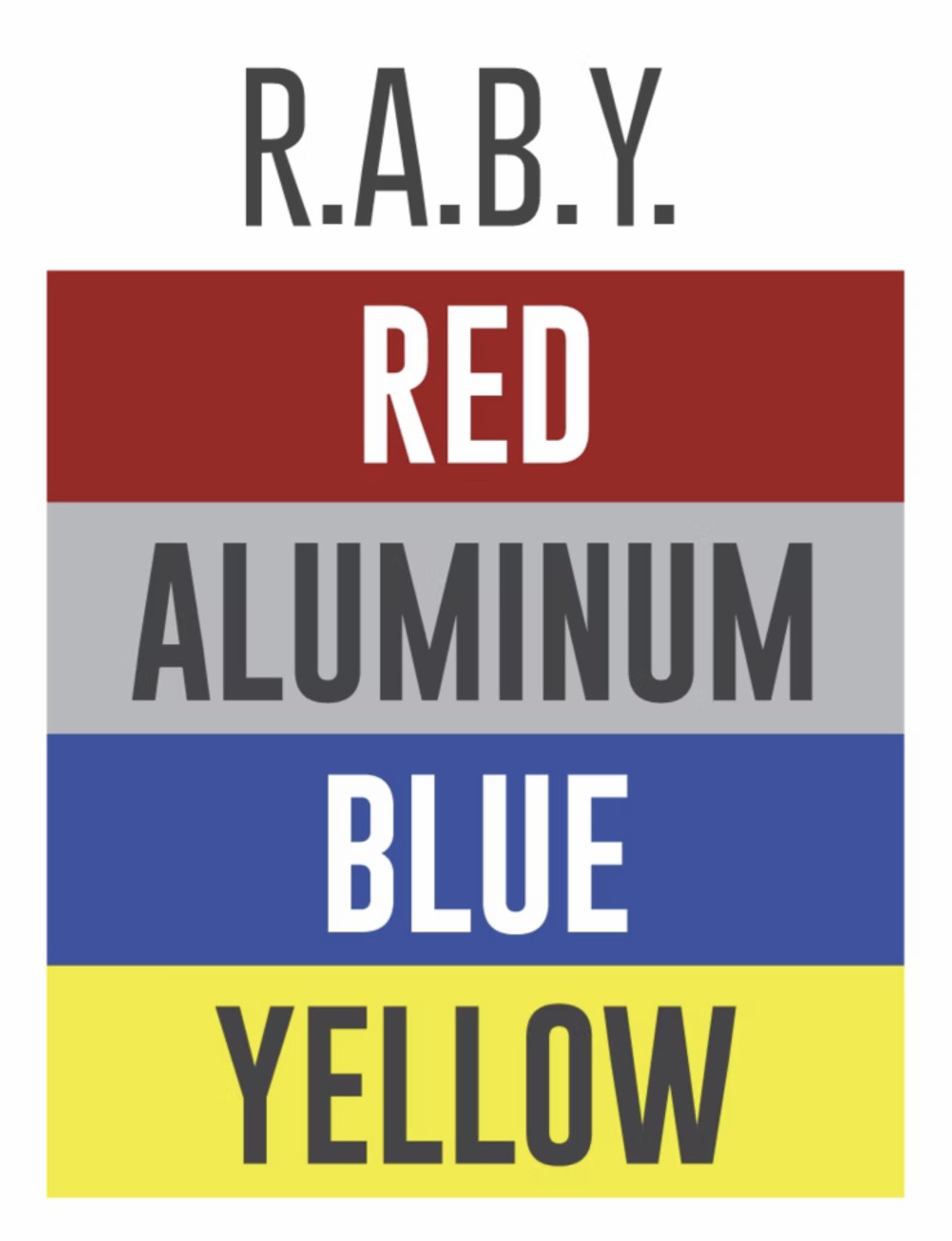KNOW YOUR HYDRANTS
The Start of The Supply Chain
NFPA 291 - Recommended Practice for Fire Flow Testing and Marking of Hydrants, outlines the recommended guidelines for hydrant coloring and the minimum GPM each color-top should provide:
Class C - Red - > 500 GPM
Class B - Orange - 500 - 999 GPM
Class A - Green - 1,000-1,499 GPM
Class AA - Light Blue - 1,500 GPM or greater
Dallas Is Different…
After talking with Luis E. Bodington, a Senior Engineer with the city of Dallas Water Utilities Department, it became clear that Dallas has opted to utilize a completely different color system that indicates something very different from the NFPA recommendations.
In Dallas, we utilize the R-A-B-Y color system:
But what do these colors indicate? GPM? Not necessarily. Instead, from the Water Department’s perspective, they indicate the SIZE of the pipe supplying the hydrant. Before we get too worried, the Water Department has partially adopted NFPA’s recommendations on minimum flow for hydrants. I say “partially” because they actually improve on the recommended GPMs supplied for Class B hydrants.
Red = 4” supply pipe with < 500 GPM
Aluminum (or silver) = 6" supply pipe with > 1,000 GPM
Blue = 8” supply pipe with > 1,000 GPM
Yellow = 12 or greater supply pipe with > 1,500 GPM
** Note that the Water Department says we should get 1000 GPM from a blue top hydrant.
COMMON QUESTIONS…
1) Can The Water Department increase GPM & Pressure?
The simple answer is yes. Currently, Rick Bailey is the Water Utilities Supervisor in this department. When the IC calls for a boost in pressure or GPMs, a technician is sent to a series of valves that can be opened/closed to achieve the desired result.
2) What About Tapping Into Different Mains?
The simple answer is "no." This is a misconception, according to the Water Department. Rarely will you find yourself at the end of a feeder line that is not looped back into the main system. They exist, but rarely will we see them, according to Mr. Bodington. A more important concept to grasp is that the city has several (12-16) pressure planes that allow us to tap into "more water." However, the odds of a fire straddling two pressure planes is very unlikely.
The following video was originally part of our "Pump Series" that we published on YouTube, but it highlights the basics of knowing your hydrantsystem:
🚨 DISCLAIMER: Dallas Fire-Rescue does not endorse or promote these videos. The information herein is my best understanding of the material covered and the subsequent views expressed are my own and not necessarily those DFR. These videos are strictly for educational purposes only. It is critical that you follow your department's MOP/SOP, and talk with your Station Officer (and crew) before implementing anything you see here on The Roll Steady.
© 2022 THE ROLL STEADY LLC. ALL RIGHTS RESERVED
PUMP SCHOOL W/ RICK BREWER
TABLE OF CONTENTS


